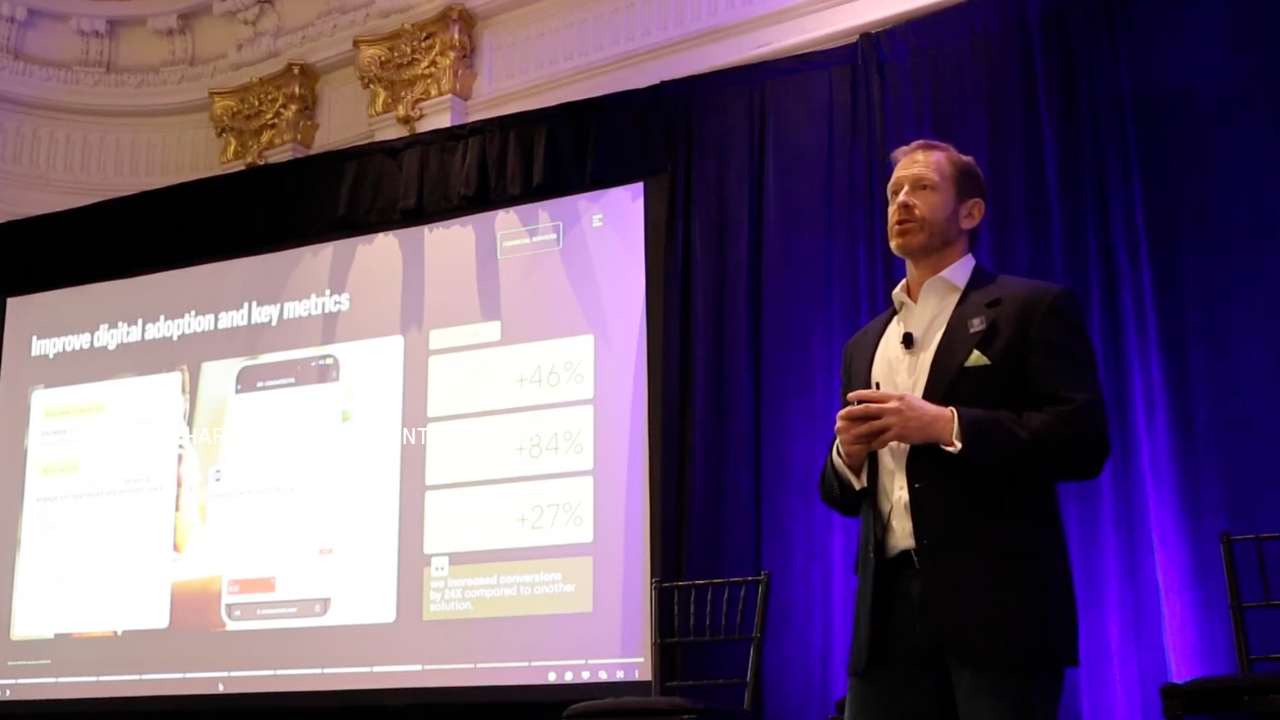The telecoms industry holds some of the most extensive and detailed customer data of any sector. And, unlike many other businesses, who will have to turn to third parties if they want to learn more about their customers, one major advantage for these firms is that the data they possess comes directly from their customers.
But holding this big data is one thing. Being able to turn it into valuable insight to improve their operations is quite another. However, in today’s data-driven society, having an effective customer analytics solution is a must for any telco that wants to increase revenue, improve customer satisfaction or boost retention.
So what should this involve, and how can telcos make sure that the tools they’re using are up to the task and can give them the valuable insight they need?
What does customer analytics mean for telcos?
Customer analytics in telecoms offers businesses a wide range of benefits. This can include improved and more relevant communications with customers, more tailored offers or deeper insight into who your users actually are, enabling you to make better long-term data-driven decisions about the performance of your marketing.
What questions can customer analytics answer?
A key area that analytics can help you with is getting a complete picture of who your customers are. Often, individuals are segmented into fairly broad groups for marketing campaigns based on high-level shared interests or demographic data, but this does not take into account people’s unique traits, drivers and affinities. However, a more in-depth customer analytics platform gives you much more granular information about your user base, which combines to offer much more powerful insight into who your customers really are.
Customer journey analytics can also provide a wealth of data, from which channels they are most likely to engage with to when would be the best time to interact with. On a wider scale, customer experience analytics can also identify signals that could indicate individuals if have a higher propensity to churn once out of contract, for example.
Why should telecoms firms use customer analytics?
Employing customer analytics in telecoms enables businesses to design more relevant, competitive offers and packages, which can have a positive impact on both acquisition and customer lifetime value. By understanding how your existing customer base behaves and how they naturally segment and respond, you can use this customer insight in a number of ways.
For example, you can precisely target new customer acquisitions that look like your highest spending customer, or match value-added service cross-sells to the audience who are most likely to convert, to name but just a few use cases.
This is critical, as campaigns that aren’t personalized or relevant are much less likely to be successful. Indeed, research has shown that almost three-quarters of customers (72 percent) won’t engage at all with marketing communications that aren’t personalized to them. Therefore, if telcos don’t have the right customer data analysis tools in place to create a detailed, personalized picture, they will struggle to see positive returns on investment.
What are the benefits of customer analysis in telecoms?
A major benefit of a customer data analytics model is its ability to provide much more personalized and relevant communications with individual customers. A true personalization campaign can take in data from multiple sources, including CRM details, billing and behavioral data, to ensure they’re reaching the right people with the right offers.
However it also requires the ability to enrich this data in order to gain a much deeper understanding of the customer – not only who they are, but what their interests and affinities are and what traits influence their decision-making. The use of tools such as the Intent Customer AI platform ensures that marketing teams are reaching the right people, with the right offers via the right communication channels.
Getting the medium right as well as the message is also vital in ensuring you’re connecting with them in the right way. Good campaigns aren’t just about what you say to customers – they’re also about when and how you say it. The right offer delivered at the wrong time, or on the wrong channel, is just as irrelevant as one that isn’t personalized to them at all.
The results of this can be clear. According to IBM, almost three-quarters (72 percent) of communication service providers that have invested in big data analytics experienced positive returns within 12 months.
Learn more about some of the key use cases for an effective customer analytics platform.
How to implement customer analytics in telecoms
The benefits of a good telco customer analytics solution are clear, but many companies may have difficulty actually getting them up and running. One of the biggest challenges is simply making use of the wealth of data from across the business – which can easily run into tens of millions of customers and trillions of individual data points. Therefore, you need big data tools designed specifically to work at these scales.
How do you implement a customer analytics strategy?
There are a few things you need for an effective telco customer analytics strategy. First and foremost, you need a platform that can help you drill down deep into your customers in order to build up a complete picture of who they are. A surface-level understanding based solely on demographic or CRM data won’t offer the nuance and insight into personality traits or brand affinities you need to deliver a truly personalized marketing campaign or customer loyalty scheme.
What are the different types of customer analytics?
Before you can take full advantage of these technologies, it’s important to understand what type of customer analytics program you’re going to run. A few key models you should be aware of include:
CRM analytics – Turning to your Customer Relationship Management assets is perhaps the most familiar form of customer data analytics for many businesses, including telcos. CRM systems can give you an overview of your customers’ basic demographic information and a history of their interactions with you, such as what services they’ve signed up for and what support queries they’ve raised.
However, its use is somewhat limited. It won’t give you much insight into individual motivations or detailed personal preferences, and it’s reliant on the underlying data being accurate, which may not always be the case for telco customers.
CDP analytics – Customer Data Platforms can offer a much more in-depth view of a customer, gathering information from multiple sources into a single view of the customer. For example, they can trace every interaction a company has with a customer in more detail, such as what methods they use to connect, how they move from one touchpoint to another and what they are likely to do in the future.
This lets you move to a more proactive form of marketing where you can move beyond simple segmentation and offer relevant, personalized offers. However, it can prove difficult to get this data under control – one study suggested, for example, that data scientists spend 80 percent of their time simply cleansing and organizing their data.
CIP analytics – Standing for Customer Intelligence Platforms, this is an evolution of customer data platforms, with a greater focus on uncovering connections, enriching data with AI to deliver better insight, and making data-driven inferences that allow you to determine what the best course of action will be on an individual level.
For telcos, this may enable you to offer specific device upgrades, plan upsells or other value-added services to improve your overall average revenue per customer (ARPU). But it could also identify other ways to increase retention or switch customers to more suitable plans even if they are unwilling or unable to increase their spend.
What is the future of customer analytics?
Efforts such as hyper-personalization and micro-segmentation to define highly specific audiences will play a major role in the future of telecom customer analytics. However, to be effective, businesses must be able to do this at scale. This means using big data analytics to study the behavior of millions of customers to make connections is vital.
CRM analytics alone aren’t equipped to cope with these rising data volumes. Solutions such as artificial intelligence (AI) and machine learning (ML) will need to be deployed to enable telcos to meet the evolving needs of all their customers without breaking the bank.
Learn more about the Intent Customer AI Platform, a data enrichment and privacy-safe platform for superior data-enriched Customer Analytics that facilitate higher engagement, better retention and improved ROI.
How is predictive analytics used in business?
Predictive and prescriptive analytics should be the goal of any advanced telco customer analytics strategy. In such a fast-moving environment, simply looking at what has happened isn’t enough, as this reactive approach means you’re likely to miss out on emerging opportunities that have passed before you even realize they exist.
What is the goal of prescriptive analytics?
A predictive analytics solution ensures you’re focusing your efforts, and your budget, in the areas that provide the best chance of results. With advanced tools, you can have greater confidence before you even launch a marketing campaign, introduce a new pricing tier or sign a deal with a new partner.
The goal of a prescriptive strategy should therefore be to move from a reactive approach to one where you can accurately anticipate not only what a customer is likely to do in the future, but also to understand what the best course of action should be before you make a decision.
How to use customer engagement analytics?
Customer engagement analytics is all about tracking how a business interacts with users and where in the customer journey would be the best time to reach out to increase engagement. This may include offering them an upsell or improved deal at a specific time, or ensuring you’re partnering with the brands that match their interests and affinities.
By looking closer at their real-world behavior using insights gleaned from first-party sources such as weblogs, you can identify where and when to send messages, as well as see which techniques aren’t working and what actions could be used as a trigger for a specific offer.
How to use customer retention analytics?
Customer retention is one of the biggest challenges facing any telco business. Churn rates remain high for the sector as a whole, at around 21 percent a year as of 2020. Having to go out and replace customers who’ve left at the end of their contract just to maintain your current position is costly and an inefficient use of resources. For example, it’s estimated by Forrester that it costs up to five times as much to acquire a new customer than it does to retain an existing one.
McKinsey notes that an effective analytics program can reduce customer churn in telcos by up to 15 percent. You can achieve this through a range of means, from improving overall customer service to boost customer satisfaction to ensuring users are presented with the most compelling and relevant offers when they are approaching the end of their contract.
Best practices of using customer analytics in telecoms
Having the right tools is vital in running a successful customer analytics strategy, but it’s only the first half of the equation. You also need to ensure you’re using them effectively.
What software should you use for customer analytics?
There are a few choices when it comes to implementing customer analytics software. You could opt to build a solution yourself. This will ensure you end up with a system that precisely meets the needs of your business, but it will be an extremely costly and time-consuming process that could easily run into millions of dollars and need several years to come to fruition.
Other options include turning to existing cloud-based business intelligence services from the likes of Amazon or Google and adapting them to your needs. However, these may not be designed for the uniqueness of the telecoms market. Another alternative is to buy a complete platform that has been especially tailored for these businesses. A telco-focused solution lets you get up and running much more quickly, while you also don’t have to worry about ongoing maintenance and upgrades.
A solution like Intent HQ’s Customer AI platform also ensures the tools can be used by anyone. An intuitive user experience that lets anyone ask questions of their customer data – not just data scientist professionals – lets you get results much quicker. It also means users such as marketers and CX pros can explore data in depth on their own terms rather than relying on others to run analytics queries for them.
How do artificial intelligence and machine learning transform telecoms analytics
The key to making the most of customer insight data is to be able to deliver results at scale, and this is something that has proven especially difficult given the volume and variety of data telcos collect on their users grows.
Therefore, taking advantage of artificial intelligence and machine learning tools will be critical. These not only help you use the entirety of your data assets to provide insights on your customers, but also lets you enrich the data to deliver powerful signals of intent, behavior and brand affinities. This combination of big data and AI creates the insights needed to target with higher precision, producing higher marketing campaign conversion and ROI.
What are some things for telcos to avoid when using customer analytics?
With so much data available for use cases like marketing analytics, it’s important that users’ privacy is respected at all times. Therefore, it’s vital that sensitive personal data isn’t made available for areas such as marketing analytics, and that any data you do use that could be used to reidentify an individual is effectively managed in a privacy-safe manner.
For instance, analytics may give you in-depth insights into a persons’ location, financial status, relationships or even their healthcare situation. All of which they may be very uncomfortable with telcos using in their personalized marketing. As a result, firms will need to ensure they have adequate data controls in place that prevent the misuse of this data.
It’s vital to understand when and when not to use data to fuel insights in support of hyper-personalization. Finding the balance between being helpful and relevant and going too far can be difficult, but it’s essential you don’t stray past this line if you want to avoid driving customers away.
To achieve this, the right corporate governance tools are critical to any customer analytics platform to protect both the user’s data and the role of the network operator as a data controller.
Find out more about how Intent Lift can help transform your customer analytics activities and put power in the hands of all your employees.




